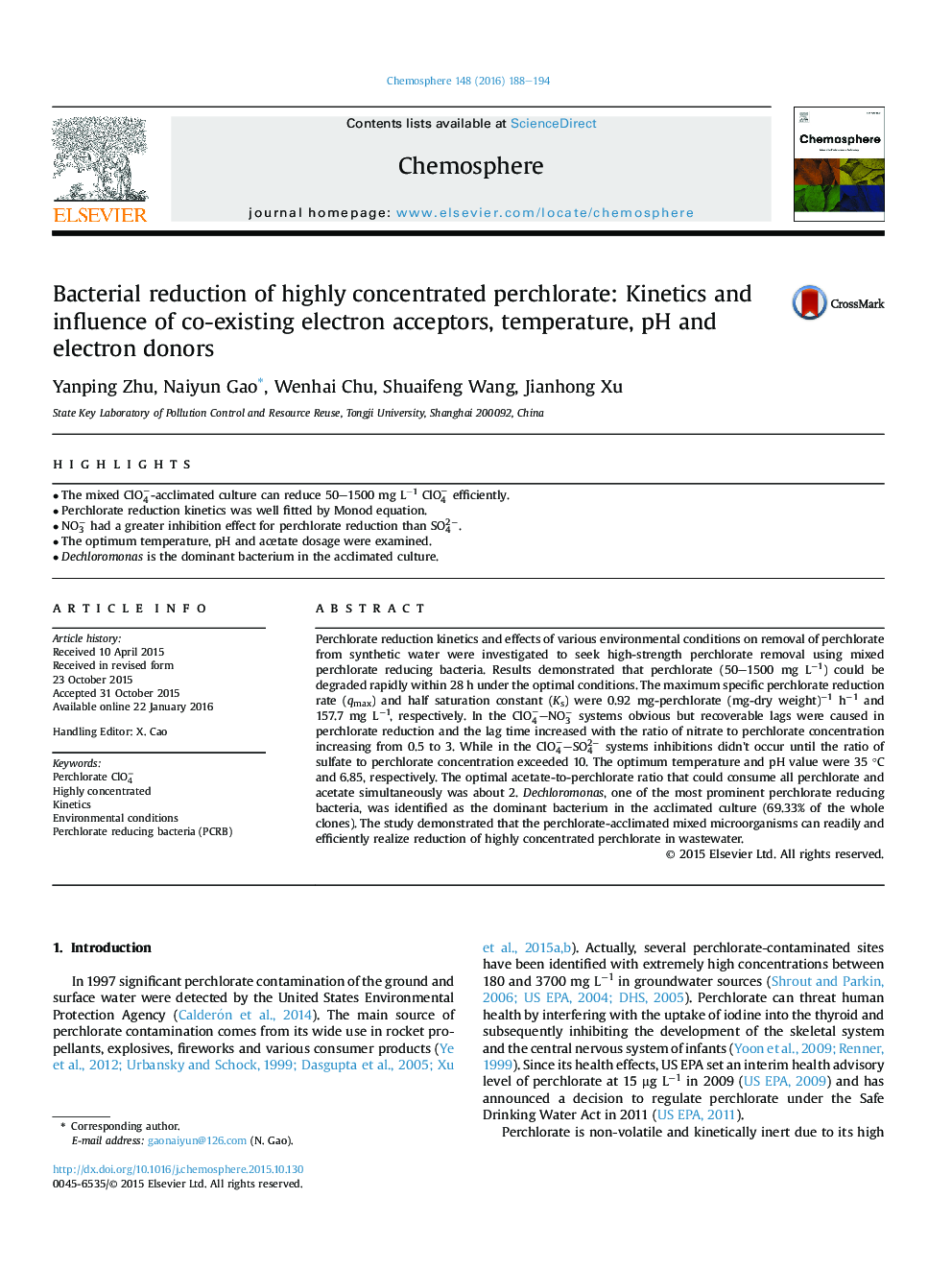| Article ID | Journal | Published Year | Pages | File Type |
|---|---|---|---|---|
| 4407812 | Chemosphere | 2016 | 7 Pages |
•The mixed ClO4−-acclimated culture can reduce 50–1500 mg L−1ClO4− efficiently.•Perchlorate reduction kinetics was well fitted by Monod equation.•NO3− had a greater inhibition effect for perchlorate reduction than SO42−.•The optimum temperature, pH and acetate dosage were examined.•Dechloromonas is the dominant bacterium in the acclimated culture.
Perchlorate reduction kinetics and effects of various environmental conditions on removal of perchlorate from synthetic water were investigated to seek high-strength perchlorate removal using mixed perchlorate reducing bacteria. Results demonstrated that perchlorate (50–1500 mg L−1) could be degraded rapidly within 28 h under the optimal conditions. The maximum specific perchlorate reduction rate (qmax) and half saturation constant (Ks) were 0.92 mg-perchlorate (mg-dry weight)−1 h−1 and 157.7 mg L−1, respectively. In the ClO4−–NO3− systems obvious but recoverable lags were caused in perchlorate reduction and the lag time increased with the ratio of nitrate to perchlorate concentration increasing from 0.5 to 3. While in the ClO4−–SO42− systems inhibitions didn't occur until the ratio of sulfate to perchlorate concentration exceeded 10. The optimum temperature and pH value were 35 °C and 6.85, respectively. The optimal acetate-to-perchlorate ratio that could consume all perchlorate and acetate simultaneously was about 2. Dechloromonas, one of the most prominent perchlorate reducing bacteria, was identified as the dominant bacterium in the acclimated culture (69.33% of the whole clones). The study demonstrated that the perchlorate-acclimated mixed microorganisms can readily and efficiently realize reduction of highly concentrated perchlorate in wastewater.
